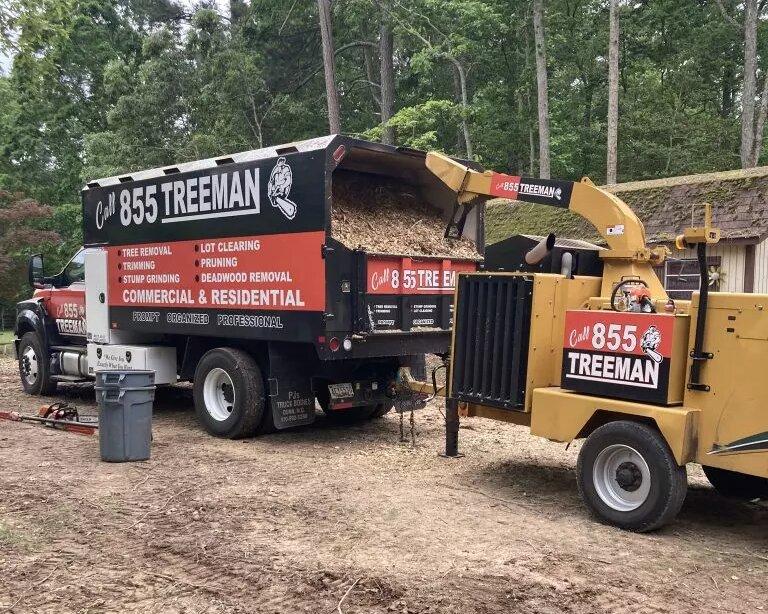Tree Whisperers: The Practice and Study of Arboriculture

Tree species are not just elements of our landscape; they are vital to our environment, providing coolness, oxygen, and a home for numerous species. As localities develop and urban environments enlarge, caring for these imposing giants becomes increasingly important. Enter the arborist—experts in arboriculture who combine creativity with scientific knowledge to ensure the well-being of trees and protection. Whether it’s through pruning, assessing, or disease management, certified arborists have the expertise and tools to enhance our connection with trees while protecting our properties.
Engaging a certified arborist is important for homeowners looking to maintain the vitality of their arboreal assets. These experts bring a richness of knowledge, allowing them to assess the condition of trees, suggest maintenance strategies, and tackle potential threats. Understanding the principles behind tree care is important, and arborists are equipped with the most current knowledge and tools to deal with everything from cutting methods to pest identification. In the following sections, we will explore the various benefits of working with tree care specialists, the most common issues they address, and how they contribute to eco-friendly tree management in our ever-changing world.
Value of Qualified Arborists
Engaging a licensed arborist is crucial for preserving the condition and protection of plants in urban and countryside environments equally. Qualified arborists possess specific expertise and experience that equips them to evaluate tree health, identify diseases, and suggest appropriate treatment. Their certification ensures they understand the nuances of tree physiology, maintenance techniques, and the right methods for trimming and cultivating. This expertise minimizes the risk of poorly caring for trees, which can lead to accidents or major property loss.
Moreover, certified arborists are trained to deal with tree dangers safely. https://www.okennedytreecare.ie/ includes tree cutting to eliminate dead or unhealthy branches, cabling and bracing to support weak limbs, or thoroughly executed tree risk assessments, their expertise confirm that trees contribute positively to the environment without posing dangers to community safety. In doing so, they play an critical role in the total management and protecting of urban natural areas.
Hiring a certified arborist is also a forward-thinking way to boost the overall health of your trees. With their knowledge, they can help homeowners and property stakeholders on recommended methods for tree care, such as proper moisture control, mulching techniques, and pest management. By committing in the skills of certified arborists, you merely safeguard the safety of your trees but also foster environmental responsibility and the visual value of your property.
Tree Vitality and Hazard Prevention
Upholding tree health is a key aspect of an arborist's responsibility, devoted to making sure that trees thrive in their habitat. Arborists utilize their knowledge of tree biology and ecology to detect issues that may influence tree vigor. Regular inspections help identify early signs of stress, disease, or pest infestations, which can lead to greater problems if not resolved promptly. By employing proper maintenance methods, such as shaping, feeding, and irrigation, arborists promote overall tree health and stop long-term damage.
Hazard prevention is another critical responsibility of certified arborists. They evaluate trees for structural integrity and potential risks, which is essential in urban areas where trees can impact buildings, power lines, and human safety. Arborists use a range of methods, including risk assessments and tree reports, to evaluate the probability of failure in branches or trunks. This forward-thinking approach enables them to recommend corrective actions, such as cabling and bracing, or even removal in cases where safety is a concern.
In besides individual tree care, arborists play a crucial role in teaching the public about the necessity of tree maintenance for hazard prevention. By raising awareness of potential risks associated with abandoned trees, they contribute to healthier communities. Arborists advocate for sustainable practices that not only protect trees but also enhance urban landscapes, ultimately leading to healthier environments where trees can flourish and provide their many benefits.
Tools and Strategies of Arboriculture
Tree care professionals employ a range of specialized instruments to effectively oversee tree well-being and security. Among the most frequent instruments are chainsaws, that prove to be essential for cutting more substantial branches and even complete trees when required. Pruning shears and loppers are important for finer work, enabling arborists to accurately trim smaller branches and improve tree structure. Additionally, climbing gear, including harnesses and lines, is essential for accessing high branches safely, enabling arborists to carry out maintenance and assessments at multiple heights.
In terms of methods, tree trimming is one of the most basic procedures in arboriculture. Arborists use particular pruning strategies, including crown reduction, crown raising, and crown reduction, customized to the tree species and the intended result. These techniques foster healthy development, improve light access, and minimize the risk of disease. Furthermore, tree cabling and bracing are employed for structural integrity in trees with fragile or compromised branches, helping to avoid failure and lengthen the tree's duration.
Comprehending tree science is also crucial in arboriculture. Arborists are trained to recognize various tree illnesses and pests, employing diagnostic tools to evaluate tree condition. Techniques such as soil analysis and root analysis enable arborists to formulate effective control strategies. By integrating their knowledge of trees with cutting-edge tools and methods, arborists play a crucial role in preserving the health and beauty of both urban and wild environments.

